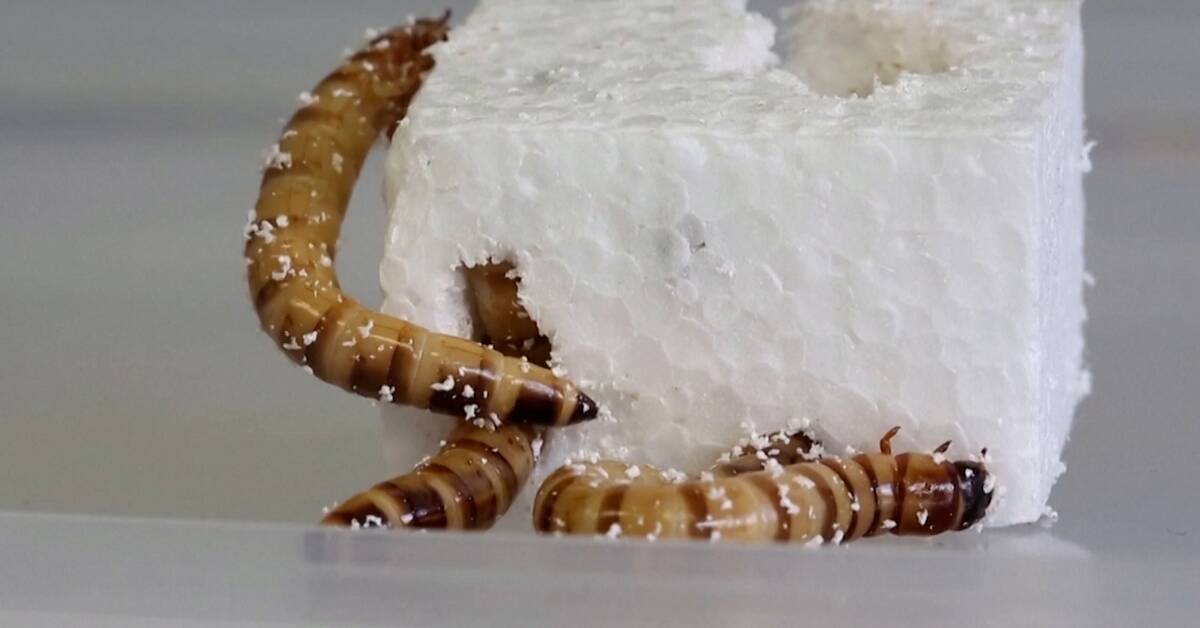The study divided mealworms into three groups.
One group ate wheat bran and enjoyed themselves, another group did not get any food at all and managed to keep a certain weight but remained very inactive.
The third group ate styrofoam - and gained weight.
- It shreds the Styrofoam, eats it and then basically feeds the bacteria in the intestines.
And what we have shown is that the bacteria have enzymes encoded that can break down the styrofoam, explains Christan Rinke, a researcher at the University of Queensland.
Letting millions of mealworms take care of plastic recycling is still not a solution, according to the researchers.
Instead, they hope to be able to design the special enzymes to eventually be able to treat plastic waste at recycling facilities.
Hear and see when the mealworms chew styrofoam in the clip above.

